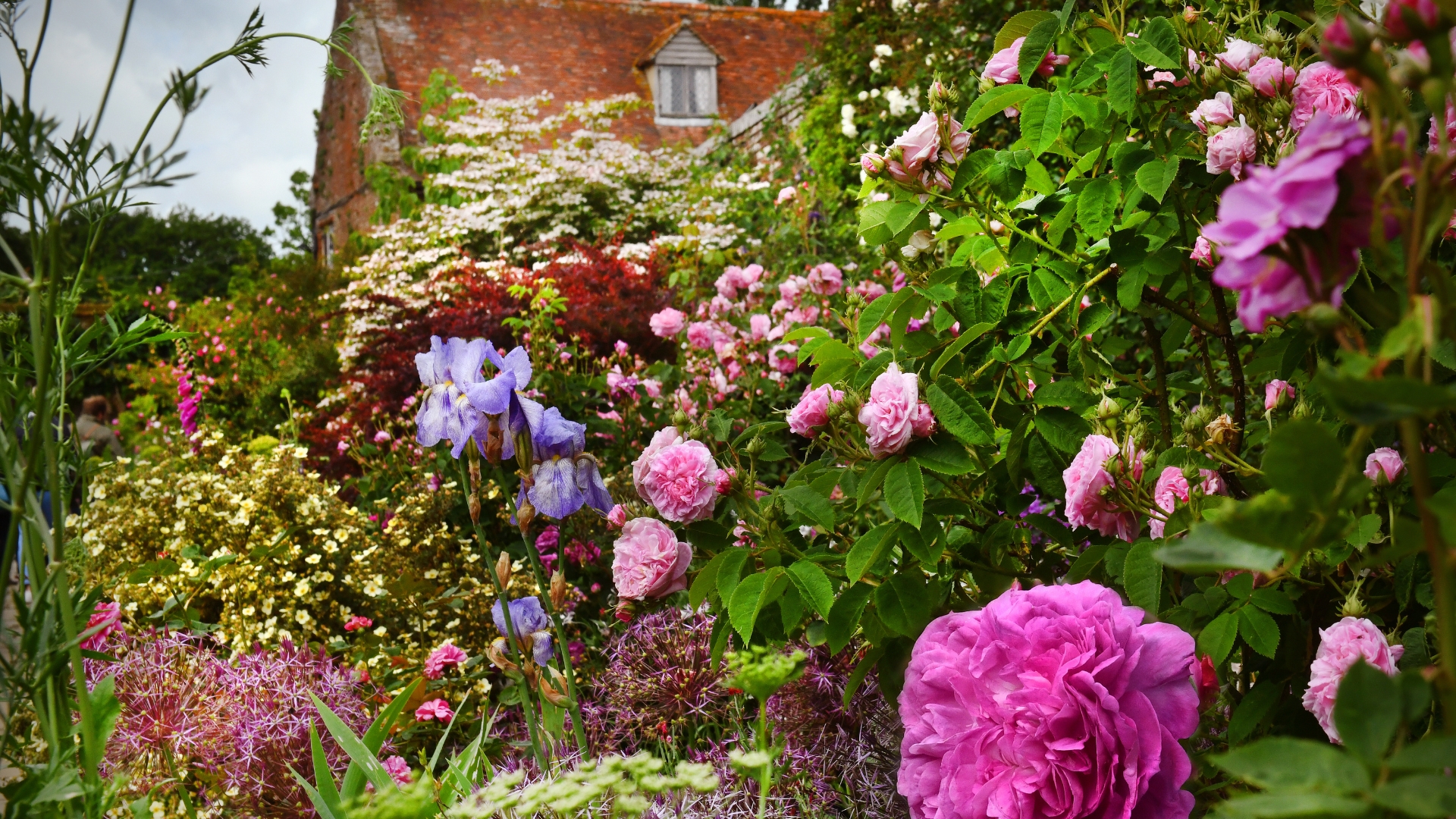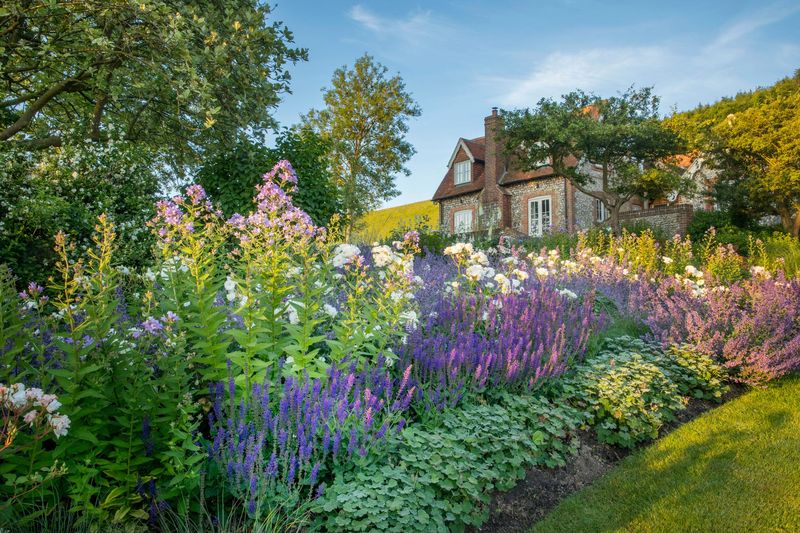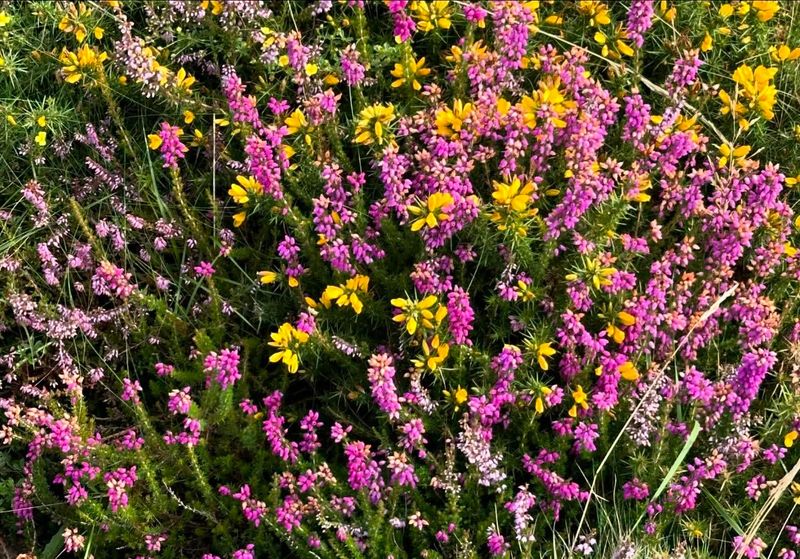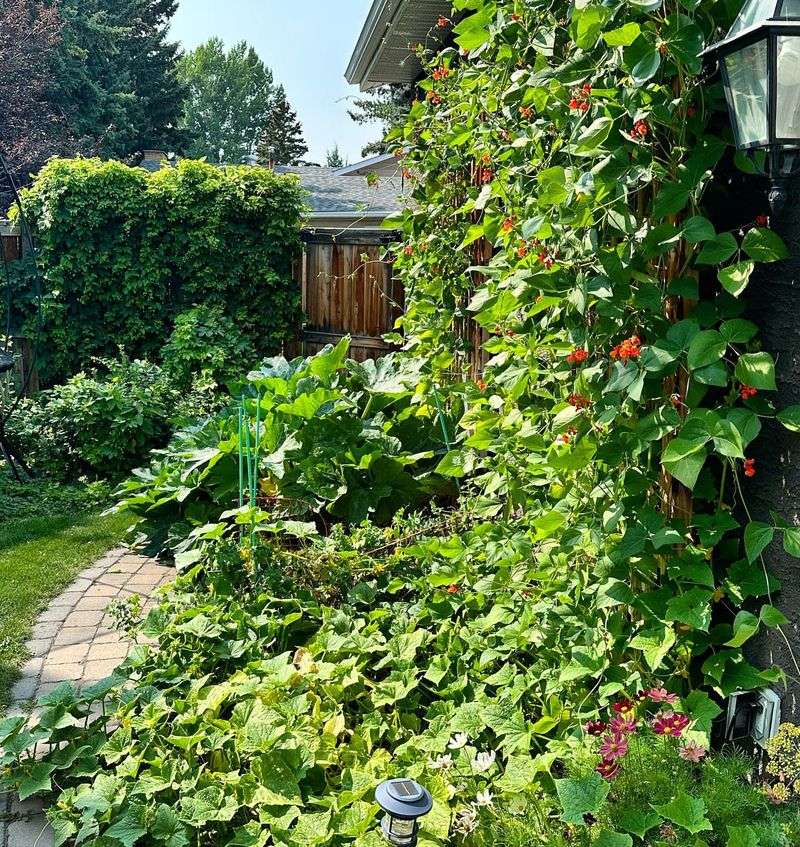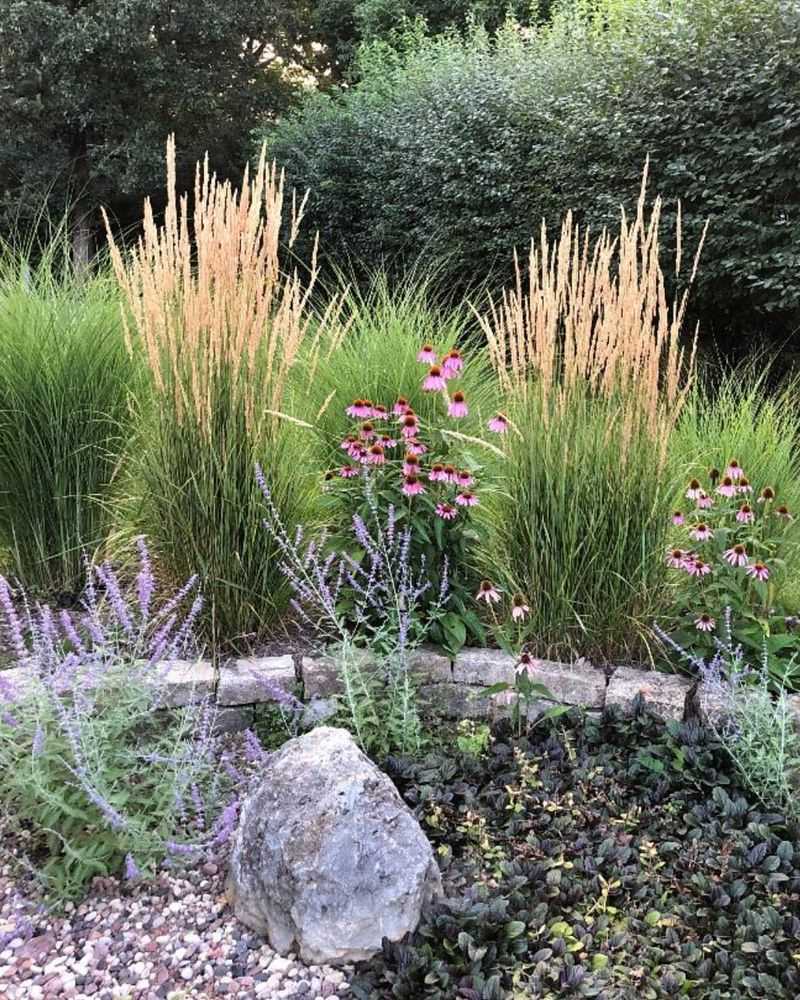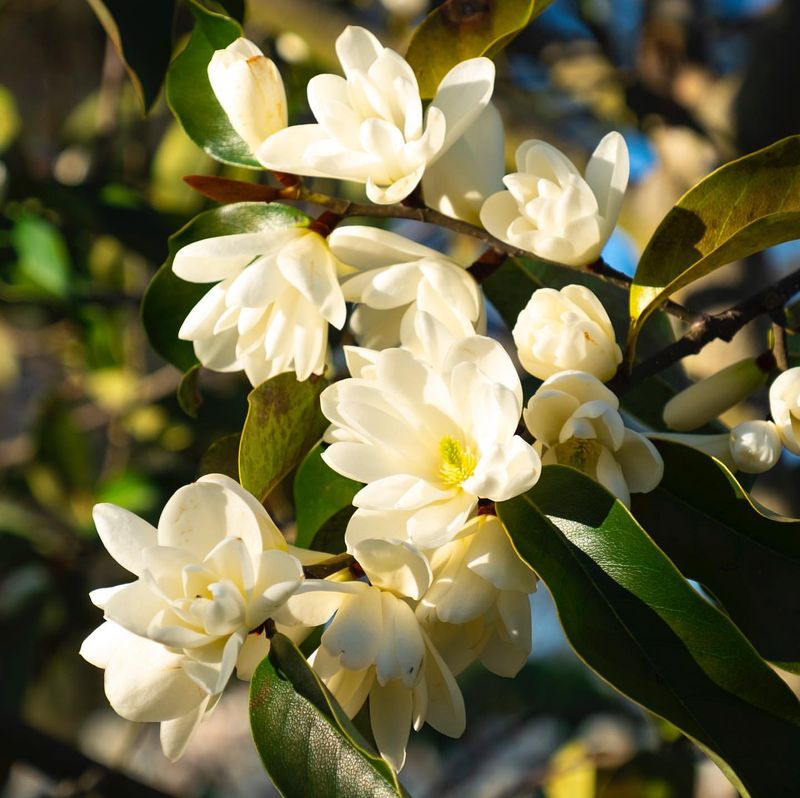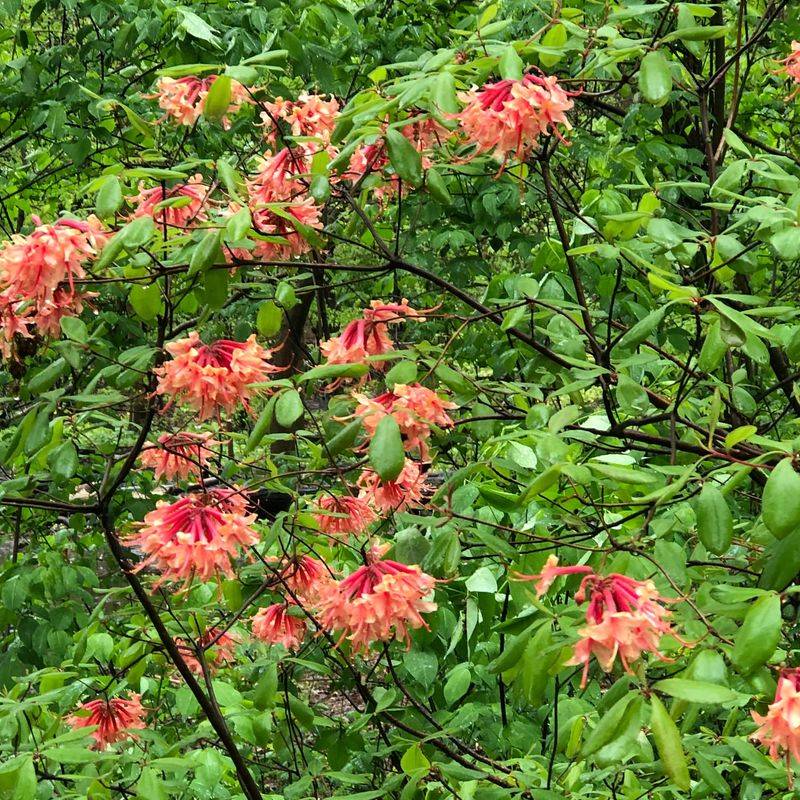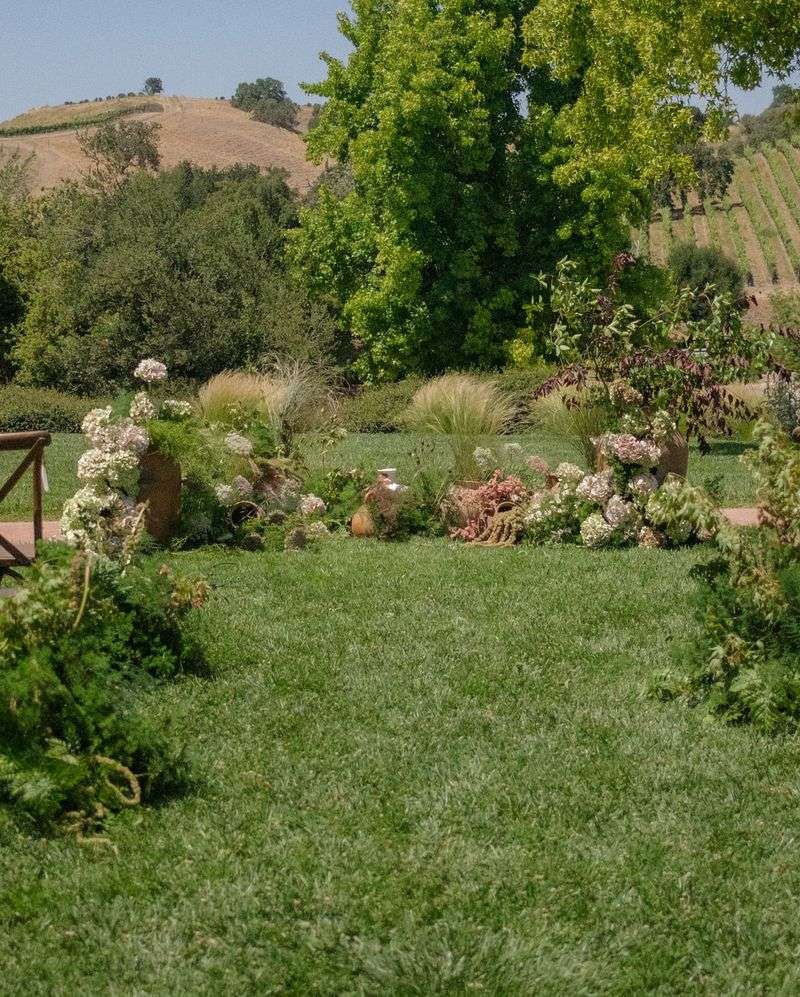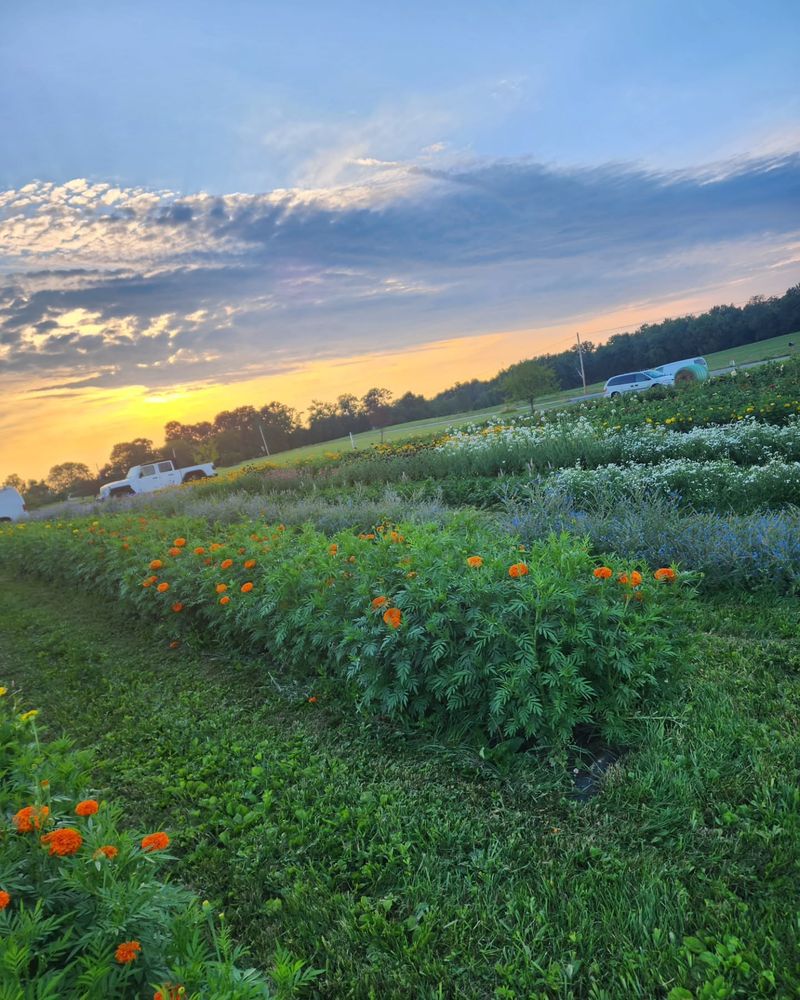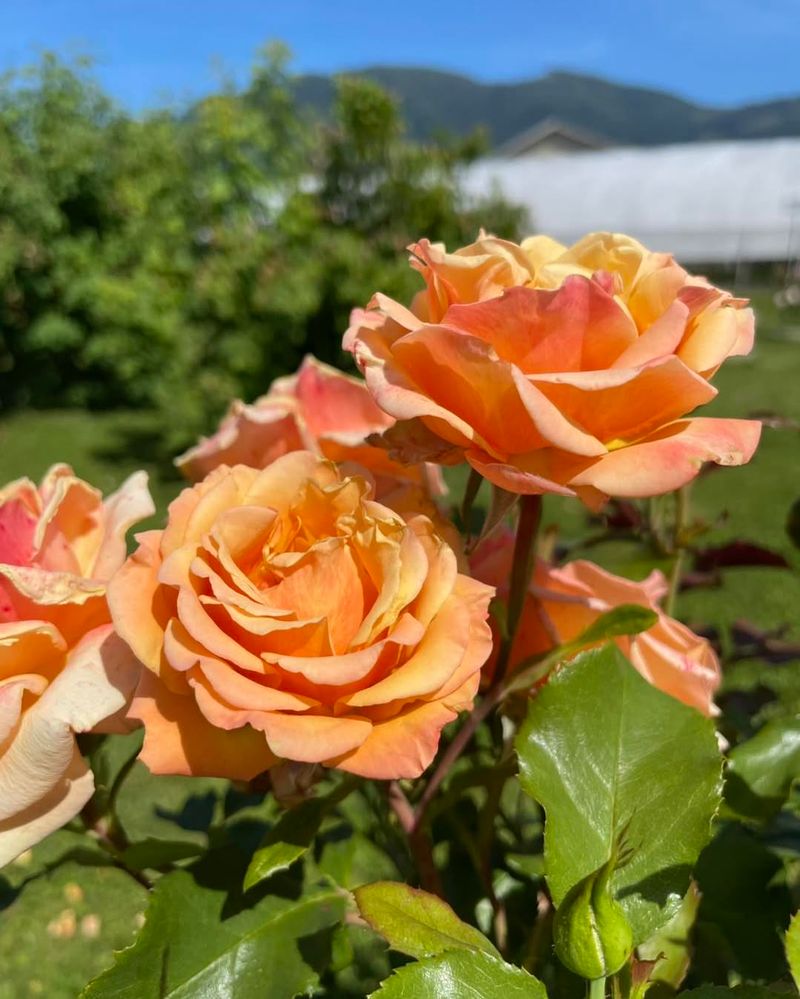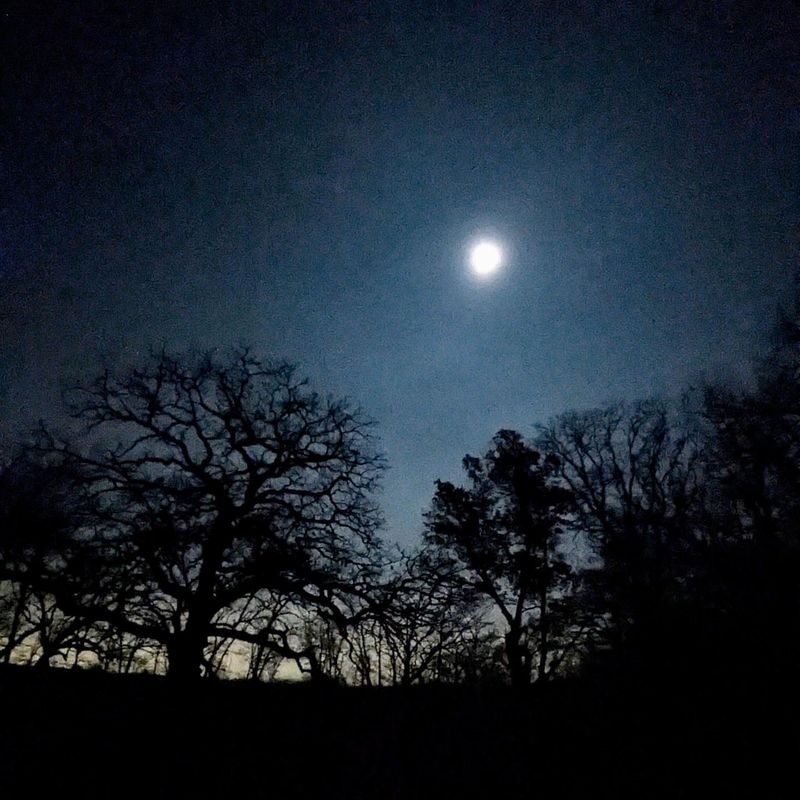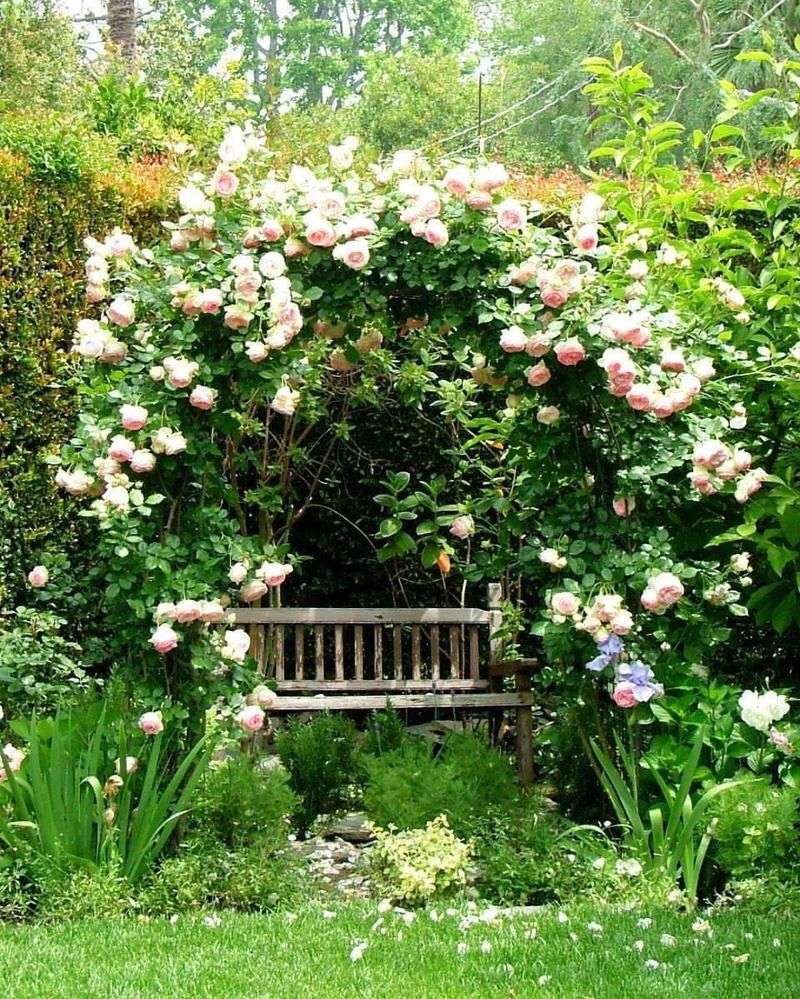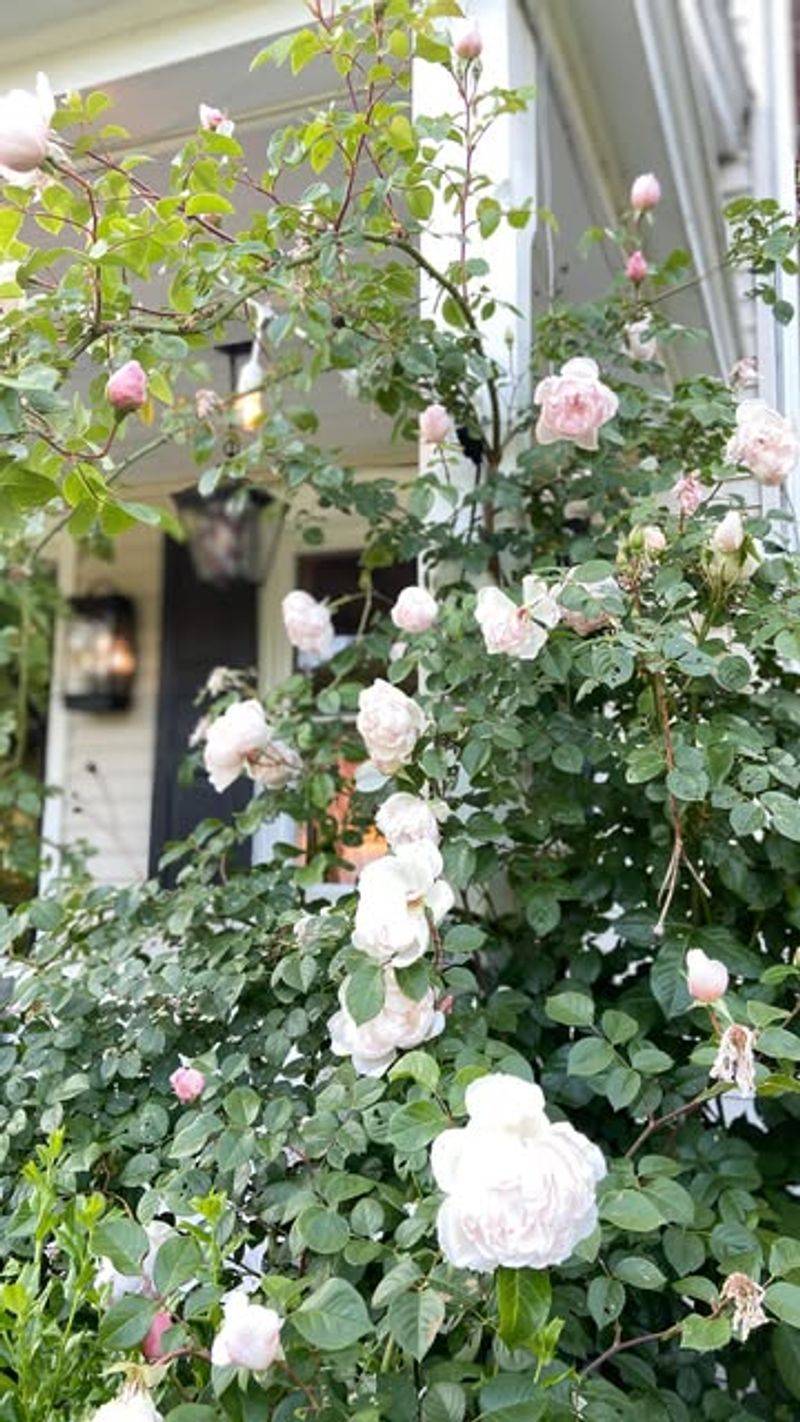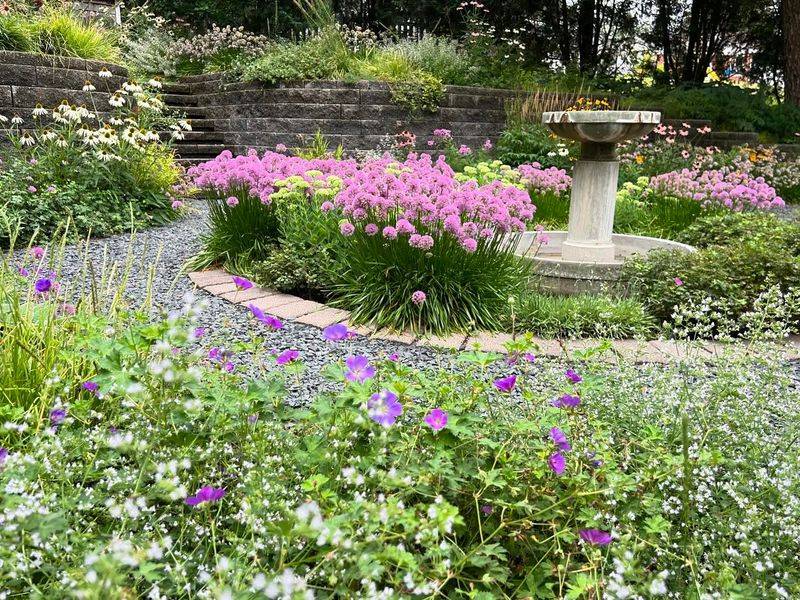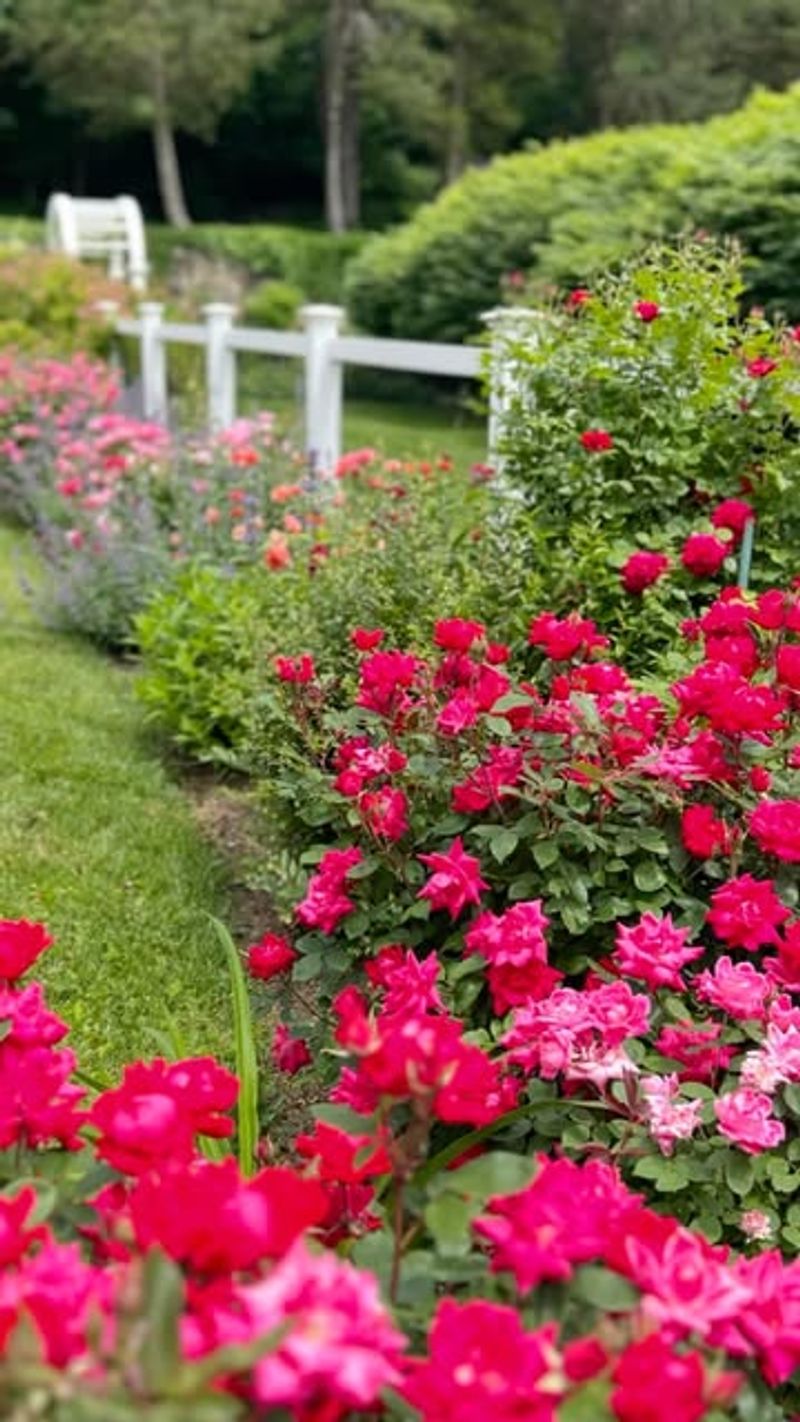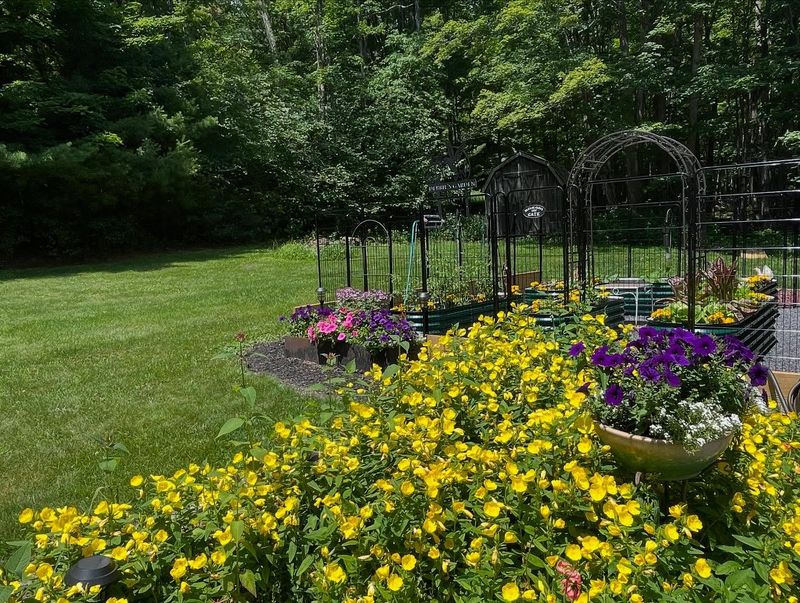They say every cloud has a silver lining — but in Debbie Rose’s English country garden, the clouds come to dance. Nestled in the rolling countryside, her garden is a year-round love letter to the sky, where blooms rise and fall in step with the seasons.
Rain or shine, it’s a place where nature doesn’t just grow — it sings in harmony.
1. Seasonal Color Wheels That Mirror the Changing Sky
Debbie arranged her flower beds in special circular patterns called color wheels. During spring, pastel blooms match the soft blue skies, while summer brings vibrant reds and yellows that pop against deep azure backgrounds.
Fall introduces rusty oranges and deep purples that complement the dramatic autumn clouds. Even in winter, strategically placed evergreens and white-barked birches create striking silhouettes against gray skies. These thoughtful color selections ensure the garden always feels connected to what’s happening overhead.
2. Reflective Water Features Capture Sky Moods
Small ponds and birdbaths scattered throughout the garden act as natural mirrors. These water features capture whatever mood the sky is in – reflecting puffy white clouds, dramatic storm fronts, or brilliant sunshine.
Debbie positioned these reflective surfaces strategically to maximize their impact. During morning and evening hours, the water catches golden light that bounces onto nearby plants. Even on overcast days, these features add depth and dimension by bringing bits of the sky down into the garden landscape.
3. Vertical Elements That Draw Eyes Skyward
Tall, elegant structures create natural transitions between garden and atmosphere. Trellises covered in climbing roses, stone obelisks, and slender cypress trees function as visual pathways that lead the eye upward.
Debbie carefully spaced these vertical elements throughout the garden, creating rhythm and movement. When visitors walk the paths, they naturally look up, connecting with both plantings and sky. These vertical accents are especially striking at sunset when they create dramatic silhouettes against colorful backgrounds.
4. Weather-Responsive Plant Selections
Smart plant choices respond beautifully to changing weather conditions. Ornamental grasses sway dramatically in the wind, while certain flowers close before rainstorms and reopen in sunshine.
Silver-leaved plants like Russian sage and lamb’s ear reflect light on cloudy days, brightening the garden. Debbie incorporated plants with translucent foliage that glow when backlit by morning or evening sun. These responsive elements create a garden that seems alive and in conversation with the atmosphere above.
5. Cloud-Inspired White Garden Section
A dedicated section filled entirely with white flowers pays homage to fluffy cumulus clouds. White roses, phlox, daisies, and snowdrops create a dreamy, floating effect that mirrors the sky on clear days.
This white garden glows magnificently during twilight hours when other colors fade. Debbie incorporated plants with different blooming seasons, ensuring the cloud garden maintains its ethereal presence year-round. Silver-gray foliage plants interspersed among the white blooms enhance the cloud-like appearance.
6. Rain-Loving Bog Garden Celebrates Wet Weather
Instead of hiding from rain, a special bog section celebrates wet weather with moisture-loving plants. Ferns unfurl dramatically after showers, while hostas collect sparkling droplets on their broad leaves.
Japanese iris and astilbe send up colorful blooms that look stunning against gray skies. Debbie designed this area with slightly sunken terrain to collect rainwater naturally. During dry spells, this section remains lush thanks to careful mulching and plant selection, continuing to reference the water cycle even when skies are clear.
7. Wind-Dancing Ornamental Grasses
Masses of feathery grasses create movement that echoes the wind patterns above. Miscanthus, pennisetum, and native meadow grasses sway in perfect harmony with passing breezes and stronger gusts alike.
Planted in drifts, these grasses create a visual rhythm that connects earth to air. The sound of rustling blades adds another sensory dimension. Debbie positioned these grasses where afternoon light catches their seed heads, creating a golden glow that’s especially magnificent when backlit by the setting sun.
8. Sunrise-to-Sunset Color Progression
Garden beds flow from east to west in a color scheme that mirrors the sun’s daily journey. Eastern sections feature morning-glory blues and soft yellows that catch first light beautifully.
Central areas burst with midday brights while western beds showcase fiery oranges, reds and purples. Debbie timed plantings so blooms open in sequence with the sun’s position. This thoughtful progression creates different experiences throughout the day, with each section having its moment of perfect alignment with the sky’s changing colors.
9. Storm-Resilient Structure Planting
Carefully positioned trees and shrubs create windbreaks that protect delicate flowers during storms. These structural plantings don’t just provide practical protection – they’re arranged to frame dramatic skies.
Debbie selected species with flexible branches that bend rather than break in high winds. Evergreens provide year-round structure while deciduous trees offer changing seasonal views through their branches. This backbone planting ensures the garden maintains its relationship with the sky even during challenging weather.
10. Night Sky Garden Room
A special garden room dedicated to evening enjoyment features white and silver plants that glow under moonlight. Night-blooming flowers like evening primrose and moonflower open as twilight approaches, releasing sweet scents.
Debbie incorporated reflective elements like small mirrors and metallic garden art that catch starlight. Subtle path lighting mimics stars, creating a magical connection between garden and night sky. This area transforms completely after sunset, offering an entirely different garden experience that celebrates the nocturnal celestial display.
11. Cloud-Watching Seating Areas
Strategically placed benches and lounging areas invite visitors to pause and look upward. These resting spots are positioned where sky views are particularly spectacular – some framed by arching tree branches, others in open clearings.
Comfortable seating angles encourage reclining to watch cloud formations or star patterns. Debbie created different seating vignettes for different times of day – morning coffee spots that catch eastern light, midday shade retreats, and sunset-viewing perches. Each location offers a unique perspective on the garden’s relationship with the atmosphere.
12. Weather-Predicting Plant Collection
Fascinating plants that respond to atmospheric changes create a living weather station. Scarlet pimpernel closes its flowers before rain, while dandelion seed heads remain closed in humidity and open in dry conditions.
Pine cones in decorative arrangements close when moisture increases. Debbie grouped these natural predictors near a garden entrance, creating an educational feature that connects visitors to sky patterns. Children especially love checking these plants to guess upcoming weather, fostering appreciation for the garden’s relationship with atmospheric conditions.
13. Four-Season Framework Design
The garden’s fundamental layout ensures visual interest regardless of weather or season. Strong architectural elements like stone walls, arbors, and pathways create beautiful lines even in winter dormancy.
Debbie selected plants with multiple seasonal features – spring blooms, summer textures, fall color, and winter structure. Evergreen foundational plantings maintain form during barren months. This thoughtful framework means the garden never loses its dialogue with the sky, whether under summer sunshine, autumn storms, or winter snow.
14. Rainbow Garden That Celebrates Rain and Sun
A special section planted with all colors of the rainbow celebrates that magical moment when rain and sunshine coincide. Flowers are arranged in ROYGBIV sequence (red, orange, yellow, green, blue, indigo, violet) in curved beds mimicking a rainbow’s arc.
Debbie positioned this garden where afternoon sun typically appears after morning showers. A small water feature with misting capabilities creates actual rainbows on sunny days. This playful garden section reminds visitors of nature’s ability to create breathtaking sky spectacles.
15. Sky-Inspired Art Installations
Tasteful garden art references celestial themes throughout the landscape. Wind chimes that sing with passing breezes, metal sculptures that cast changing shadows, and mosaic stepping stones featuring sun, moon and star motifs add artistic dimension.
Debbie commissioned local artists to create weather vanes and sundials that serve both functional and decorative purposes. Glass ornaments catch and scatter light in rainbow patterns on sunny days. These artistic elements strengthen the garden’s connection to atmospheric elements in creative, unexpected ways.

